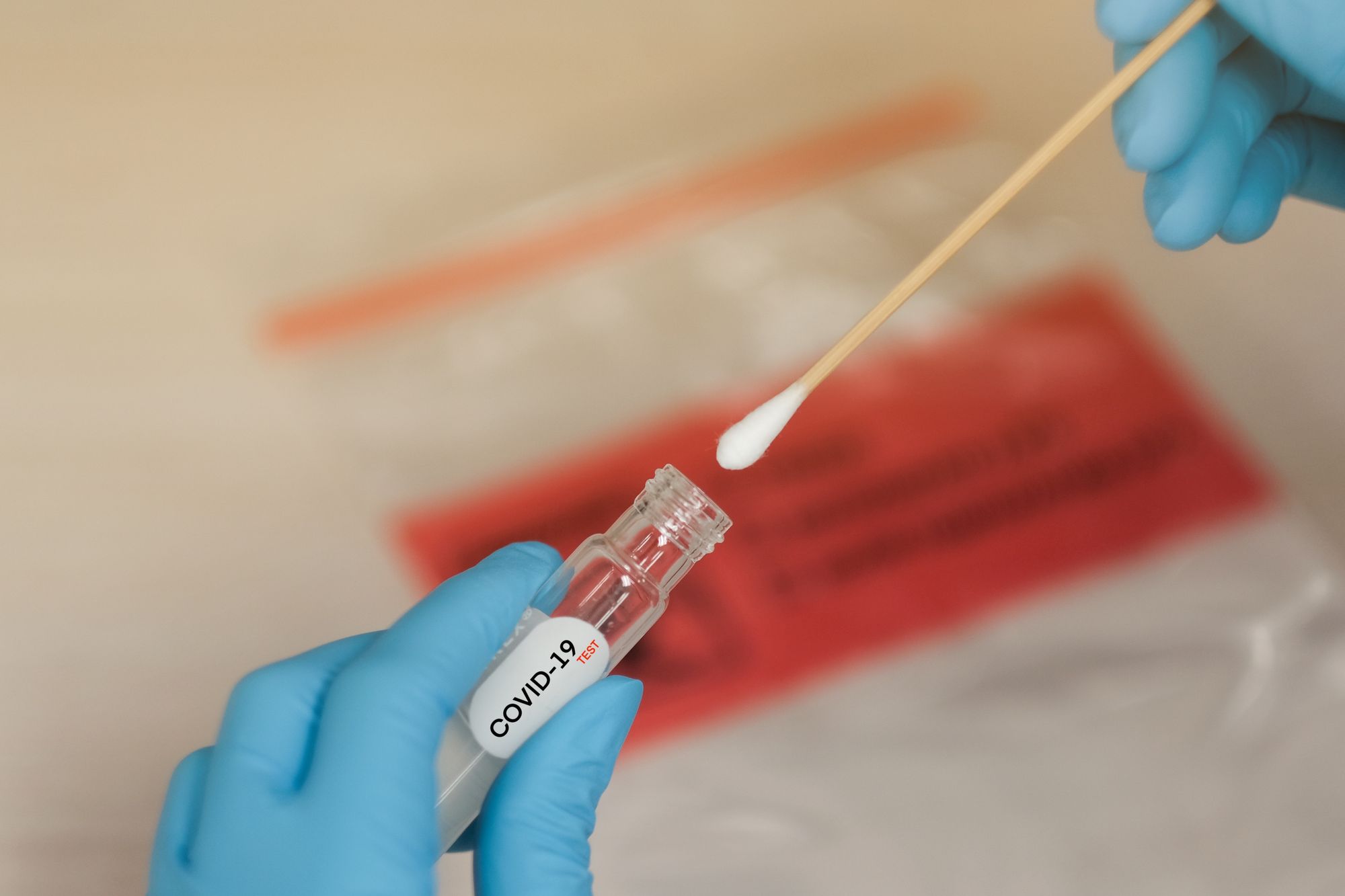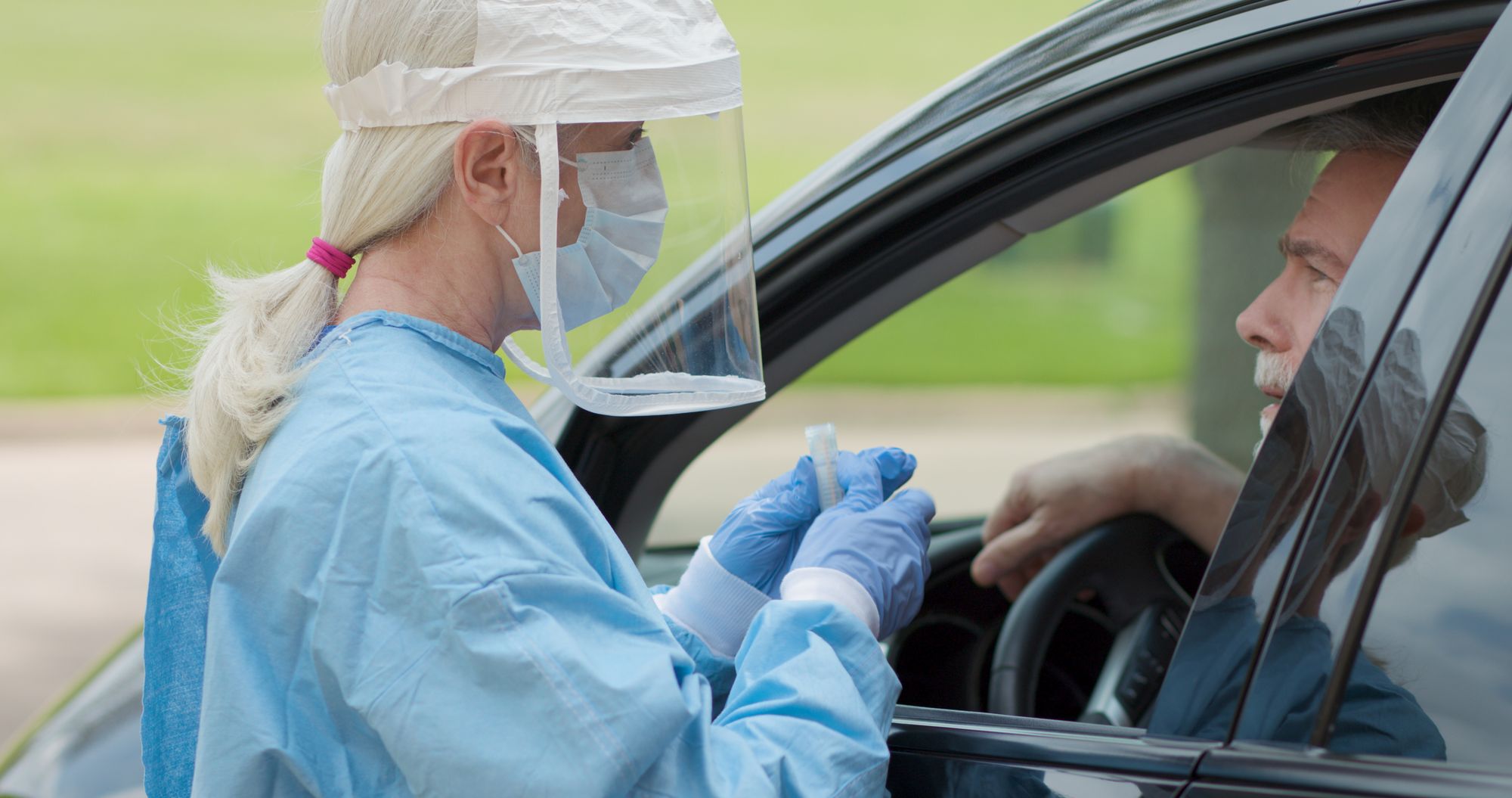The ability to quickly, regularly and accurately test for the deadly coronavirus is a key component of the ability of the medical field and the public to understand the extent of the pandemic, and of government officials’ ability to adequately respond.
And yet, the testing for the presence of the virus in residents of South Dakota and around the U.S. has been plagued by a series of problems. Among them: a lack of needed testing supplies; inefficiencies in how the test is administered and how results are analyzed; and the potential inability of the test itself to accurately confirm the presence of the virus.
The consequences of those testing limitations are potentially fatal. Far more people are likely infected with COVID-19 than is known. The lack of confirmed positives has opened the door to downplaying of the depth and seriousness of the pandemic by government officials and individuals. And in some cases, the opportunity for “false negatives,” in which tests do not indicate the presence of the virus in an infected person, can lead to unnecessary spreading of the virus.
Over the past week, South Dakota News Watch Reporter Nick Lowrey has reviewed studies and examined data and has spoken to several medical experts in South Dakota and beyond to provide new information about the COVID-19 tests, the testing methods and potential limitations of the process. Here is a report on what he found.

South Dakota shares same testing challenges as rest of nation
South Dakota ranks among the top 20 states in testing per capita for the virus that causes COVID-19, and while state officials tout that fact, experts say testing rates are still too low to know just how widespread the disease really is.
Of the state’s roughly 880,000 residents, about 7,100 had been tested for COVID-19 as of April 8, according to South Dakota Department of Health Data. The low rate of testing for COVID-19, though, is due almost entirely to a shortage of critical testing supplies. Similar shortages are being experienced all over the country and are forcing public health officials to put strict limits on who gets tested and when.
While it may not be as complete as healthcare professionals would like, the data shared publicly through the South Dakota Department of Health’s COVID-19 webpage is the best data currently available. The data include the most recent reported testing results from the state health lab, Avera Health, Sanford Health, the Mayo Clinic’s commercial clinical lab and Quest Diagnostics, a private, multi-national clinical laboratory company, said DOH spokesperson Derrick Haskins.
The private labs testing for COVID-19 have let the Department of Health take the lead on public sharing of test data, but officials at Sanford Health and Avera Health have been fairly open with South Dakota News Watch about what their individual testing regimes have found.
As of Wednesday, April 8, Sanford Health had performed 5,053 COVID-19 tests across its multi-state hospital system, according to Shawn Neisteadt, a senior media relations specialist with Sanford. Of the more than 5,000 COVID-19 tests Sanford had conducted, roughly 2,900 of the tests were conducted on South Dakotans. Slightly over 200 of Sanford’s tests returned positive results.
Leaders at Avera Health have been a little more reticent to share their testing data. On Monday, April 6, Dr. David Basel, vice president of clinical quality at Avera Health, told News Watch that Avera had recorded 192 positive COVID-19 tests. About 85 percent of Avera’s tests were conducted on South Dakotans.
The state’s numbers are updated every day by noon and represent the testing reported through the previous day. As of Thursday, April 10, 7,647 tests for the disease had been performed on South Dakotans, with 536 tests returning a positive result. Between April 7 and April 8, 399 new tests were reported to the DOH and 54 of those tests, roughly 13.5%, returned positive results. Between April 8 and April 9, 500 new tests were conducted. Of those, 89 tests, about 17.8%, were found to be positive for COVID-19.
A large part of the reason for the relatively high rate of positive results is that testing is being conducted on people who are already showing strong symptoms of COVID-19, such as pneumonia, and are more likely to test positive. But experts expect as many as 80% of people infected with the COVID-19 virus either don’t develop symptoms at all or only show mild symptoms, such as a dry cough and fever. Simply put, far more people have been infected with the virus than have tested positive for it.
“That’s a major driver for why the government has changed its recommendation to wear masks,” said Dr. Marie-Louise Landry, director of the clinical virology laboratory at Yale University. “Now we realize that there are many people who may have such minor symptoms, they may have a runny nose or a little cough that is typical for this time of year, and say ‘this can’t be COVID,’ and, in fact, it can be.”

"Every time we think things are better and we'll tell people we're going to expand testing, we find out that we're not going to be getting some key reagents and can't do it. We are doing testing, but it is more limited by far than we would like to, and very frustrating.” -- Dr. Marie-Louise Landry, Yale University
There is no way to know exactly how many people have actually been infected, Landry said. At least not yet. Severe shortages of critical testing supplies mean public health officials likely will have to continue limiting the availability of tests to high-need and high-risk populations.
However, there is some hope on the horizon, Landry said. New tests designed to identify COVID-19 antibodies in blood samples are likely to start arriving at hospitals and clinical labs within a month. Antibody tests aren’t effective for identifying active infections but they could help scientists get a better understanding of how prevalent the COVID-19 virus actually is, she said.
“People are very hopeful the antibody test could give us that information and how many people are immune,” Landry said. “If we have a lot of people with immunity, that can protect the people who are not immune. The antibody tests are going to be very important and could really help us.”
In the meantime, the testing data DOH shares with the public is still useful, Basel said.
“Personally I pay a lot of attention to them, because it’s kind of a leading indicator,” He said. “It helps us quite a bit in knowing how many people are symptomatic and how many of those are symptomatic because of this coronavirus. It is still very helpful from that monitoring standpoint.”
COVID-19 testing mostly restricted to high-risk patients
Shortages of necessary testing supplies, such as swabs and chemicals needed to run tests for the virus that causes COVID-19, are forcing hospitals to limit who they test to conserve supplies.
“We don’t know how often we will get resupplied … so we do still conserve somewhat on the number of tests that we do,” said Dr. Basel of Avera Health, one of two private labs certified to perform COVID-19 testing in South Dakota.
Nationwide, clinical laboratories are running short of everything from sample collection swabs to the solution needed to transport samples from where they are collected at the lab. Even the chemical solutions required to run the actual tests are in desperately short supply.
“That’s been very limiting. And every time we think things are better and we’ll tell people we’re going to expand testing, we find out that we’re not going to be getting some key reagents and can’t do it,” said Landry, of Yale. “We are doing testing, but it is more limited by far than we would like to, and very frustrating.”
In another example of the extent of the supply shortage, South Dakota’s State Epidemiologist Joshua Clayton said during an April 9 conference call with healthcare providers that the state health lab’s supply of “flocked” sample swabs was running very low. The state had ordered new foam-tipped swabs but didn’t expect them to arrive until mid-May, Clayton said.
In an effort to manage their supply shortages, the state health lab, Sanford Health and Avera Health all are following guidelines set by the federal Centers For Disease Control and Prevention and have decided not to test anyone who isn’t displaying active COVID-19 symptoms, such as a fever or shortness of breath. Patients who haven’t been in contact with someone who tested positive also aren’t considered a high priority for testing, according to CDC guidelines.
The state health lab has further restricted testing to hospitalized patients with COVID-19 symptoms, healthcare workers and people living or working in nursing homes or assisted living facilities.
Sanford Health’s lab also has restricted testing to hospitalized patients with COVID-19 symptoms, older adults and all patients with underlying medical conditions that put them at greater risk from COVID-19, said Neisteadt.
All of the restrictions on who gets tested and when has likely reduced the number of confirmed and reported cases of COVID-19 in South Dakota and across the country, experts said.

Uncertainty over accuracy of most common COVID-19 tests
Despite some glaring limitations, the most common methods used for diagnosing COVID-19 infections in South Dakota can be very accurate, experts say.
Doctors at the state public health lab and at Sanford Health and Avera Health are using polymerase chain reaction (PCR) technology to identify the virus in patients. Under the right circumstances, PCR-based testing is known to be nearly 100% accurate when it comes to identifying viral infections. Still, the science of diagnosing COVID-19 specifically has only been around for a few months, and there are a lot of unknowns, said Landry.
“We don’t really know how a lot of these tests perform and which ones are more accurate than others,” Landry said.
One example of what scientists don’t know about COVID-19 testing is what part of the body is the most reliable place to find the virus that causes the disease, said Dr. Jim Dunn, director of medical microbiology and virology at Texas Children’s Hospital in Houston. The virus tends to move around as it runs its course, so one day it might be concentrated in the nasal cavity, the next it might move to the lungs, which can lead to poor sample collections and bad test results, he said.
“There are people working on that,” Dunn said. “They’re looking at different types of samples at different time points during infection, even things like blood samples, or stool samples to really try to figure out how we can best identify those patients that are infected.”
Right now, the CDC recommends taking swabs of mucus from the nasopharynx, a location deep in the nasal passage. To do that, a sample collection swab must be inserted through the nose all the way to the back of the nasal cavity to a point that is, roughly, right above the back of a person’s mouth. Swabbing the nasopharynx, while not perfect, is still the best known method for obtaining a sample of the virus from an infected person. This is a common sampling method being used at drive-up COVID-19 test sites in South Dakota and elsewhere.
PCR-based testing methods work by essentially copying relatively small amounts of a virus’ genetic code so that it can be more easily identified. The method has been globally recognized by scientists as one of the most accurate ways to identify whether someone is actively infected with a virus. PCR-based tests have been used for many years to diagnose the flu and HIV, for example.
“This kind of testing looks directly for the presence of the virus in the patient’s sample,” said Dr. Lorne Holland, senior director of clinical pathology at Sanford Health. “Because they directly measure the virus, molecular testing methods are both sensitive and specific — they are able to detect small amounts of the virus and reliably detect this virus even if other viruses or bacteria are present too.”
After the swabbing process is finished, the swab must be placed in a sterile transport medium to protect the virus’ genetic material from degradation before it gets to the lab.
Once in the lab, the sample is placed in a chemical solution designed to copy one of the virus’ genetic building blocks. In the case of SARS-CoV-2 — the official name of the coronavirus that causes COVID-19 — the targeted building block is RNA, a molecule that is similar to DNA and is used to store genetic information. The chemical solution, aided by specialized lab equipment called thermocyclers, then specifically targets SARS-CoV-2 RNA and uses chemical reactions to make billions of copies of it. Eventually, the copies change the chemical solution’s color to indicate the presence of the virus.
If the solution doesn’t change color, there was no virus in the sample. The chain reactions that copy the virus’ RNA don’t work if the targeted RNA isn’t present.
Sanford Health’s labs have been using PCR-based viral testing for several years and the lab’s procedures are well-established, Holland said. The instruments Sanford uses have a long track record of producing very reliable and accurate results, though there are still some limitations, he said.
“No laboratory test can ever be perfect. For example, if a patient was exposed to the virus an hour ago, then no test will be positive,” Holland said. “However, performing our testing with proven, molecular PCR technology is the best possible testing we can offer for our patients.”

“That's one of the biggest reasons why we don't test people who don't have symptoms. Because their viral load is probably low enough that even if they do have some degree of the virus, it's not going to be high enough that we're going to detect it." -- Dr. David Basel, Avera Health
Rate of ‘false negatives’ in COVID-19 testing unknown
The type of tests used to diagnose COVID-19 have proven reliable over decades of use with other diseases, but experts worry that because tests for the new virus were hastily designed, there could be higher than expected rates of “false negative” results, or those that do not indicate the presence of the virus when indeed the patient is infected.
Usually, before a medical test can get approval from the federal Food and Drug Administration, it is often subjected to years of development and evaluation for accuracy. The tests for SARS-CoV-2 were developed over the course of a couple of months and continue to be surrounded by unanswered questions, such as when and what type of sampling methods are best.
There are several ways a COVID-19 test could deliver a false negative result, Landry said. First, getting a good sample can be difficult. A swab must be inserted through a patient’s nose to the nasopharynx. Not only is the swabbing process uncomfortable for the patient, it can cause coughing or sneezing which can expose whoever is administering the test to the virus if they aren’t wearing the right protective gear, said Landry.
“You actually have to put the swab in very deep and a lot of people don’t do that very well,” Landry said.
Another major reason a test might deliver a false negative result is that the virus tends to move around the respiratory system as it progresses, said Dunn. A patient with COVID-19-caused pneumonia, for example, may not have a high concentration of the virus in their nose. In that case, a nasal swab might not collect enough virus for a test to detect it, Dunn said.
Taking a second, oral swab in addition to a nasopharyngeal swab and testing both at the same time might help ensure an accurate test result, Dunn said. Taking two swabs, though, would exacerbate a third testing limitation — the nationwide shortage of testing supplies.
Medical professionals can’t use just any swab that happens to be at hand when they test someone for COVID-19. Swabs need to be long enough to reach all the way through the nasal cavity to the nasopharynx, and its tip has to be capable of collecting a clean sample. Cotton swabs, such as Q-tips, wouldn’t work very well, Dunn said.
Still, another potential cause of false negative COVID-19 test results is taking a swab before a patient starts showing symptoms, said Basel.
“That’s one of the biggest reasons why we don’t test people who don’t have symptoms. Because their viral load is probably low enough that even if they do have some degree of the virus, it’s not going to be high enough that we’re going to detect it,” Basel said.
Exactly how high the false negative rate might be for COVID-19 tests isn’t well understood. And is likely to take months of dedicated research to get reliable data, Basel said. Testing guidelines for COVID-19 were created at what amounts to light-speed in the medical world and continue to evolve as new information is discovered, Dunn said. Limits on supplies also are forcing hospital systems such as Avera Health to avoid retesting patients, Basel said.
The good news is that if a sample contains the SARS-CoV-2 virus, the tests South Dakota’s labs use are nearly 100% accurate. None of the state’s labs have reported any known false negative tests, so far.
“Thus far, we have identified no possible false positives or false negatives,” said Holland, of Sanford Health. “No lab test is perfect, but we are more than 3,000 tests in and we’ve yet to identify a suspicious result.”




